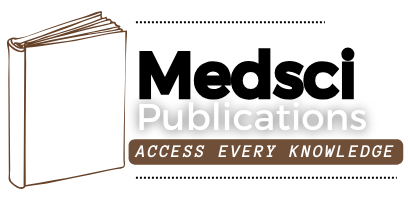Neurodevelopmental Status of Children Born During COVID-19 Pandemic in Belagavi City: A Cross-Sectional Study
DOI:
https://doi.org/10.55489/njcm.160520254860Keywords:
Child Development, COVID 19, Social Isolation, Pre Schoolars, Motor Skills, Cognitive DevelopmentAbstract
Background: The implementation of containment measures during the COVID-19 pandemic significantly reduced outdoor activities for children. Previous research has suggested that these restrictions negatively affected children’s psychological well-being and heightened the risk of developmental delays. The study aims to assess the neurodevelopmental status of children born during the COVID-19 pandemic in Belagavi city, using the Bayley Scales of Infant and Toddler Development (BSID IV).
Method: This cross-sectional study enrolled 48 participants from pre-schools in Belagavi city between August 2023 and January 2024. BSID IV was used to assess neurodevelopment across various domains. Central tendency measures were calculated for demographic data. Independent sample t-tests and one-way ANOVA were employed to compare categorical and continuous demographic characteristics of the study participants, mothers, fathers, and families with BSID IV scores.
Result: The neurodevelopmental status of the participants revealed the following mean scores: Cognitive domain (115.1±10.7), Language domain (101.9±10.5), Fine motor domain (102.9±10.3), Communication domain (93.1±8.6), Socio-emotional domain (103.0±11.6), Socialization (100.2±8.1), Daily living skills (97.08±6.98), and Adaptive behavior (95.6±7.6).
Conclusion: The neurodevelopmental status of children born during the COVID-19 pandemic in Belagavi city shows variations across domains. Cognitive development is within the average range, but language development is somewhat lower, with communication skills particularly affected.
References
Rocha PMB. The Covid-19 pandemic and its possible consequences for language and speech development delays in children: an urgent issue. Audiol Commun Res. 2021;26:e2566 DOI: https://doi.org/10.1590/2317-6431-2021-2566
Ajanovic S, Garrido-Aguirre J, Baro B, Balanza N, Varo R, Millat-Martínez P, et al. How did the COVID-19 lockdown affect Children and adolescent's Well-Being: Spanish parents, children, and adolescents respond. Front Public Health. 2021 Nov 25;9:746052. DOI: https://doi.org/10.3389/fpubh.2021.746052 PMid:34900898 PMCid:PMC8655116
Byrne S, Sledge H, Franklin R, Boland F, Murray DM, Hourihane J. Social communication skill attainment in babies born during the COVID-19 pandemic: a birth cohort study. Archives of Disease in Childhood. 2022 Oct 11;108(1):20-4. DOI: https://doi.org/10.1136/archdischild-2021-323441 PMid:36220496 PMCid:PMC9763171
Dubey H, Sharma RK, Krishnan S, Knickmeyer R. SARS-CoV-2 (COVID-19) as a possible risk factor for neurodevelopmental disorders. Frontiers in Neuroscience Front Neurosci. 2022 Dec 16;16:1021721. DOI: https://doi.org/10.3389/fnins.2022.1021721 PMid:36590303 PMCid:PMC9800937
Wang L, Chen Y, Sylvia S, Dill SE, Rozelle S. Trajectories of child cognitive development during ages 0-3 in rural Western China: prevalence, risk factors and links to preschool-age cognition. BMC Pediatrics. 2021;21:199. DOI: https://doi.org/10.1186/s12887-021-02650-y PMid:33902510 PMCid:PMC8074422
Munn EE, Case L, Miedema ST, Stribing A, Brian A. What influences the likelihood of gross motor developmental delay among preschoolers in the rural United States? Research Quarterly for Exercise and Sport. 2025 Jan 17;1-8. DOI: https://doi.org/10.1080/02701367.2024.2445232 PMid:39819444
Wang L, Jiang D, Chen Y, Zhang S, Rozelle S. Paths of cognitive and social-emotional delays before age three in rural China: Predictive power on skills at preschool age. PLoS ONE. 2024 Sep 6;19(9):e0310016. DOI: https://doi.org/10.1371/journal.pone.0310016 PMid:39240865 PMCid:PMC11379282
Campbell T, Shanley DC, Page M, McDonald T, Zimmer-Gembeck M, Hess M, Watney J, Hawkins E. Psychometric properties of the rapid neurodevelopmental assessment in detecting social-emotional problems during routine child developmental monitoring in primary healthcare. BMC Prim Care. 2025 Apr 11;26(1):106. DOI: https://doi.org/10.21203/rs.3.rs-4652892/v1 PMID: 40217187; PMCID: PMC11987427.
Letts E, King-Dowling S, Calotti R, DiCristofaro N, Obeid J. Investigating the validity of the Ages and Stages Questionnaire to detect gross motor delays in a community sample of toddlers: A cross-sectional study. Early Human Development. 2023 Oct 24;187:105882. DOI: https://doi.org/10.1016/j.earlhumdev.2023.105882 PMid:39491398
Desmarais C. Classification of language delay at two years and analysis of associated personal and socio-family characteristics and their accumulation. Psychology, Linguistics, Education. 2007. Available from: https://corpus.ulaval.ca/entities/publication/32628fec-ba47-4a27-b93d-e1eeeeaeee8d
De Bree E, Wiefferink K, Gerrits E. Characteristics of children and youth referred for language assessment at different ages. Journal of Speech Language and Hearing Research. 2024;67(8):1-16. DOI: https://doi.org/10.1044/2024_JSLHR-23-00540 PMid:38984930
Marchman VA, Dale PS, Fenson L, editors. MacArthur-Bates Communicative Development Inventories: User’s guide and technical manual. 3rd ed. Baltimore, MD: Brookes Publishing Co; 2023.
Furnier SM, Weismer SE, Rubenstein E, Gangnon R, Rosenberg S, Nadler C, et al. Using adaptive behavior scores to convey level of functioning in children with autism spectrum disorder: Evidence from the Study to Explore Early Development. Autism. 2023 Aug 23;28(5):1135-49. DOI: https://doi.org/10.1177/13623613231193194 PMid:37609907
Uljarević M, Spackman EK, Cai RY, Paszek KJ, Hardan AY, Frazier TW. Daily living skills scale: Development and preliminary validation of a new, open-source assessment of daily living skills. Frontiers in Psychiatry. 2023 Jan 23;13:1108471. DOI: https://doi.org/10.3389/fpsyt.2022.1108471 PMid:36756637 PMCid:PMC9900738
Malhi P, Menon J, Bharti B, Sidhu M. Impact of home stimulation on the motor development of malnourished toddlers: a cross-sectional study. Journal of the Scientific Society. 2024 Jul 1;51(3):450-4. DOI: https://doi.org/10.4103/jss.jss_89_23
Shah F, Sembiring AFN, Khairiah D. EARLY CHILDREN'S LANGUAGE DEVELOPMENT THROUGH STORYING METHOD. BUHUTS AL-ATHFAL Jurnal Pendidikan Dan Anak Usia Dini. 2022 Dec 31;2(2):267-82. DOI: https://doi.org/10.24952/alathfal.v2i2.6159
Walter F, Daseking M, Pauls F. The role of Cognitive Skills, Sex, and Parental Education for Social-Emotional Skills: A Cross-Sectional Study on the WPPSI-IV performances of children aged 3 to 5 years. Children. 2022 May 17;9(5):730. DOI: https://doi.org/10.3390/children9050730 PMid:35626907 PMCid:PMC9139969
Gruijters RJ, Raabe IJ, Hübner N. Socio-emotional skills and the socioeconomic achievement gap. Sociology of Education. 2023 Dec 18;97(2):120-47. DOI: https://doi.org/10.1177/00380407231216424
Attanasio O, Blundell R, Conti G, Mason G. Inequality in socioemotional skills: a cross-cohort comparison. Journal of Public Economics 2020;191(11):104171 DOI: https://doi.org/10.1016/j.jpubeco.2020.104171
Downloads
Published
How to Cite
Issue
Section
License
Copyright (c) 2025 Pratiksha Kalgutkar, Vinuta Deshpande

This work is licensed under a Creative Commons Attribution-ShareAlike 4.0 International License.
The authors retain the copyright of their article, with first publication rights granted to Medsci Publications.










